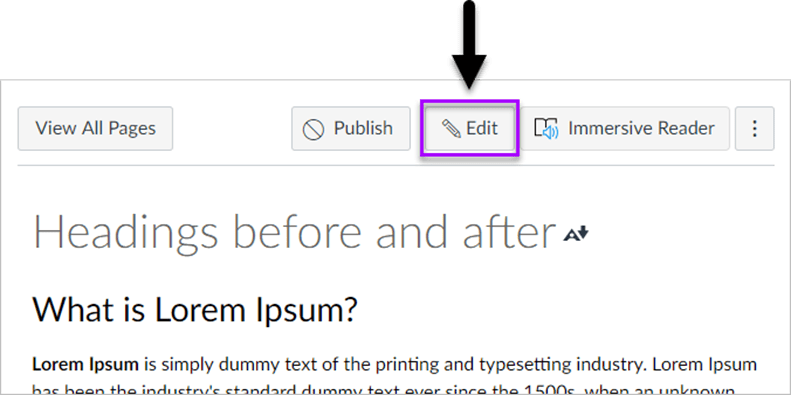Microsoft Immersive Reader is a powerful tool that can help students engage with written text. In this blog post, we’ll explore how to use the Immersive Reader within Canvas to read Canvas pages, and how to customize the reader’s features to enhance your reading experience.
Video Overview | View on YouTube
Step 1:
Access the Immersive Reader within Canvas To access the Immersive Reader, you need to have a Canvas page open. Once you have the page open, select the “Immersive Reader” button located in the top right corner of the page. This will launch the Immersive Reader interface, which reformats the page for easy reading and highlights individual words as it goes.
Step 2:
Customize Your Reading Experience Once you’ve accessed the Immersive Reader, you can customize your reading experience to suit your needs. You can change the voice settings to determine how fast you want the reader to read, and choose a male or female voice. You can also change the text size, font style, and color contrast themes to make the text more readable. Additionally, you can choose to highlight different components of nouns, verbs, adjectives, or adverbs within the text itself. This is particularly helpful for ESL learners and those studying complex subjects. Furthermore, you can use the align focus feature to have the reader read one sentence at a time, which is beneficial for people with cognitive disabilities.
Step 3:
Utilize Additional Features In addition to customizing the reading experience, there are other features available in the Immersive Reader that can be useful. You can select a different language to translate the content into, and there’s a built-in picture dictionary that can play words out loud or provide images of what a word means. This is helpful for people with cognitive disabilities or those who are ESL.
However, it’s important to note that the Immersive Reader has some limitations. It only works on Canvas pages and not within assignments or quizzes, and it doesn’t engage with videos, links, or third-party content. Additionally, you have to exit the reader to change pages within Canvas.
In conclusion, the Microsoft Immersive Reader within Canvas is a valuable tool that can help students engage with written text and improve their reading skills. By customizing the reading experience and utilizing additional features, students can make the most of the tool and enhance their learning.








































You must be logged in to post a comment.